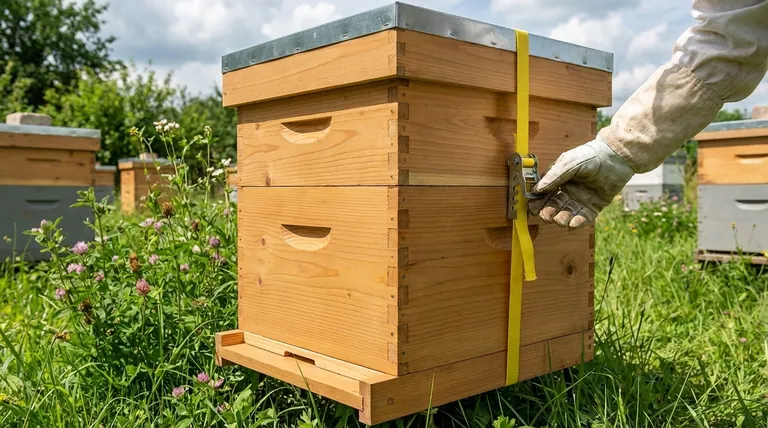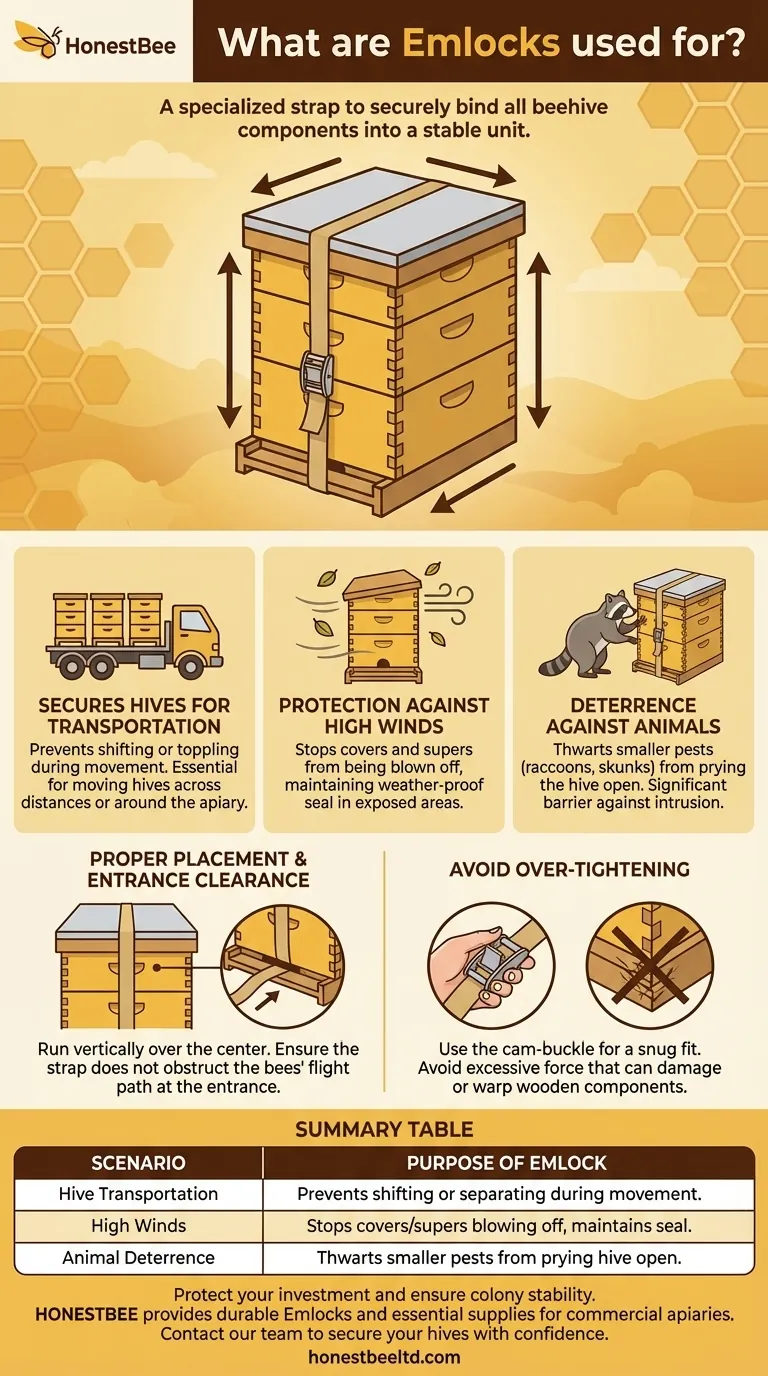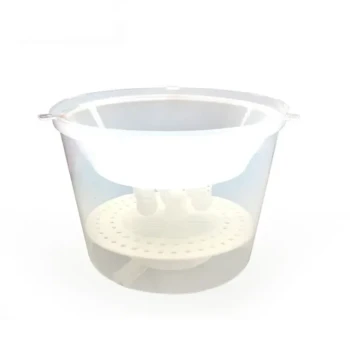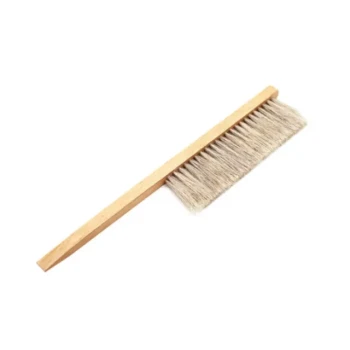In beekeeping, an Emlock serves one primary function: it is a specialized strap used to securely bind all the components of a beehive together. This ensures the hive—from its bottom board to its lid—acts as a single, stable unit, which is critical when the hive needs to be moved or when it is at risk of being disturbed.
An Emlock is more than just a strap; it is essential insurance against hive separation. While a hive's own weight and the bees' propolis provide some stability, an Emlock protects the colony from catastrophic failure caused by transportation, high winds, or animal disturbances.

Why Hive Integrity is So Critical
A modern beehive is essentially a vertical stack of separate boxes. While this modular design is excellent for inspections and honey harvesting, it also creates inherent points of failure.
The Stacked-Box Design
A standard Langstroth hive consists of a bottom board, one or more deep boxes for the brood nest, shallower boxes (supers) for honey storage, an inner cover, and a telescoping outer cover. These components simply rest on top of one another.
The Dangers of Separation
If these boxes are shifted or knocked apart, the consequences can be devastating for the colony. Separation breaks the hive's seal, leading to rapid heat loss, moisture ingress, and defensive chaos. An open hive is also an invitation for robbing by other bees and pests, which can quickly destroy a weakened colony.
Key Scenarios for Using an Emlock
An Emlock is not needed on every hive at all times, but it is an indispensable tool in specific, high-risk situations.
Securing Hives for Transportation
This is the most common use for an Emlock. Moving a hive, whether across the country or just to a new spot in the yard, involves bumps and jostling. An Emlock ensures the hive components do not shift or topple, which would be disastrous for both the bees and the beekeeper.
Protection Against High Winds
In apiaries exposed to strong or gusty winds, an Emlock prevents the top cover or even upper honey supers from being blown off. This maintains the hive's weather-proof seal and protects the colony from the elements.
Deterring Animals
While an Emlock won't stop a determined bear, it is highly effective at thwarting smaller animals. Raccoons, skunks, and opossums often try to tip hives or pry them open to eat brood and honey. A tightly secured strap makes it significantly harder for them to gain entry.
Understanding the Trade-offs and Best Practices
Using an Emlock is straightforward, but improper use can cause more harm than good. Understanding the correct technique is key to protecting both your hive and your equipment.
The Risk of Over-Tightening
The goal is to make the hive snug and secure, not to apply crushing force. Emlocks use a cam-buckle mechanism, which is preferable to a ratchet strap because it is much harder to over-tighten. Excessive pressure can damage the wooden corners of your hive boxes or warp them over time.
Proper Placement for Maximum Stability
For maximum security, the Emlock strap should be run vertically over the hive. Place it over the center of the outer cover and run it down both sides and under the bottom board. This binds the entire stack together from top to bottom.
Ensuring a Clear Entrance
When positioning the strap, always ensure it does not block the hive entrance. Obstructing the bees' flight path will cause traffic jams, stress the colony, and can make them more defensive.
Making the Right Choice for Your Apiary
Deciding when and if to use an Emlock comes down to assessing the specific risks your hives face.
- If your primary focus is moving hives: An Emlock is non-negotiable for securing your colonies and preventing disaster during transport.
- If your primary focus is stationary hive security: Use an Emlock in areas with high winds, curious livestock, or significant pressure from animals like raccoons.
- If your primary focus is beekeeping in a calm, sheltered yard: While not always required, keeping an Emlock on hand is an inexpensive and wise form of insurance for unexpected events.
Ultimately, an Emlock is a simple tool that provides profound peace of mind by safeguarding your colony against predictable risks.
Summary Table:
| Scenario | Purpose of Emlock |
|---|---|
| Hive Transportation | Prevents boxes from shifting or separating during movement. |
| High Winds | Stops covers and supers from being blown off, maintaining the hive's seal. |
| Animal Deterrence | Thwarts smaller pests like raccoons from prying the hive open. |
Protect your investment and ensure colony stability. As a leading supplier for commercial apiaries and distributors, HONESTBEE provides the durable beekeeping equipment you need. Let our wholesale-focused operations equip you with reliable Emlocks and other essential supplies. Contact our team today to discuss your apiary's needs and secure your hives with confidence.
Visual Guide

Related Products
- Professional Galvanized Hive Strap with Secure Locking Buckle for Beekeeping
- Wholesales Dadant Size Wooden Bee Hives for Beekeeping
- HONESTBEE Advanced Ergonomic Stainless Steel Hive Tool for Beekeeping
- Professional Insulated Plastic Bee Hives
- Black Plastic Beetle Barn Hive Beetle Trap for Beehives
People Also Ask
- Can straps with hook ends be used for beehives? A Guide to Secure Hive Management
- What maintenance is required for hive straps? A Guide to Cam Buckle vs. Ratchet Strap Care
- What is the best length for straps used around beehives? Why 12 Feet is the Industry Standard
- What are the types of Emlocks available? Choose the Right Strap for Hive Security
- How should a cam buckle strap be installed for optimal performance? Master the Leverage for Maximum Tension



















